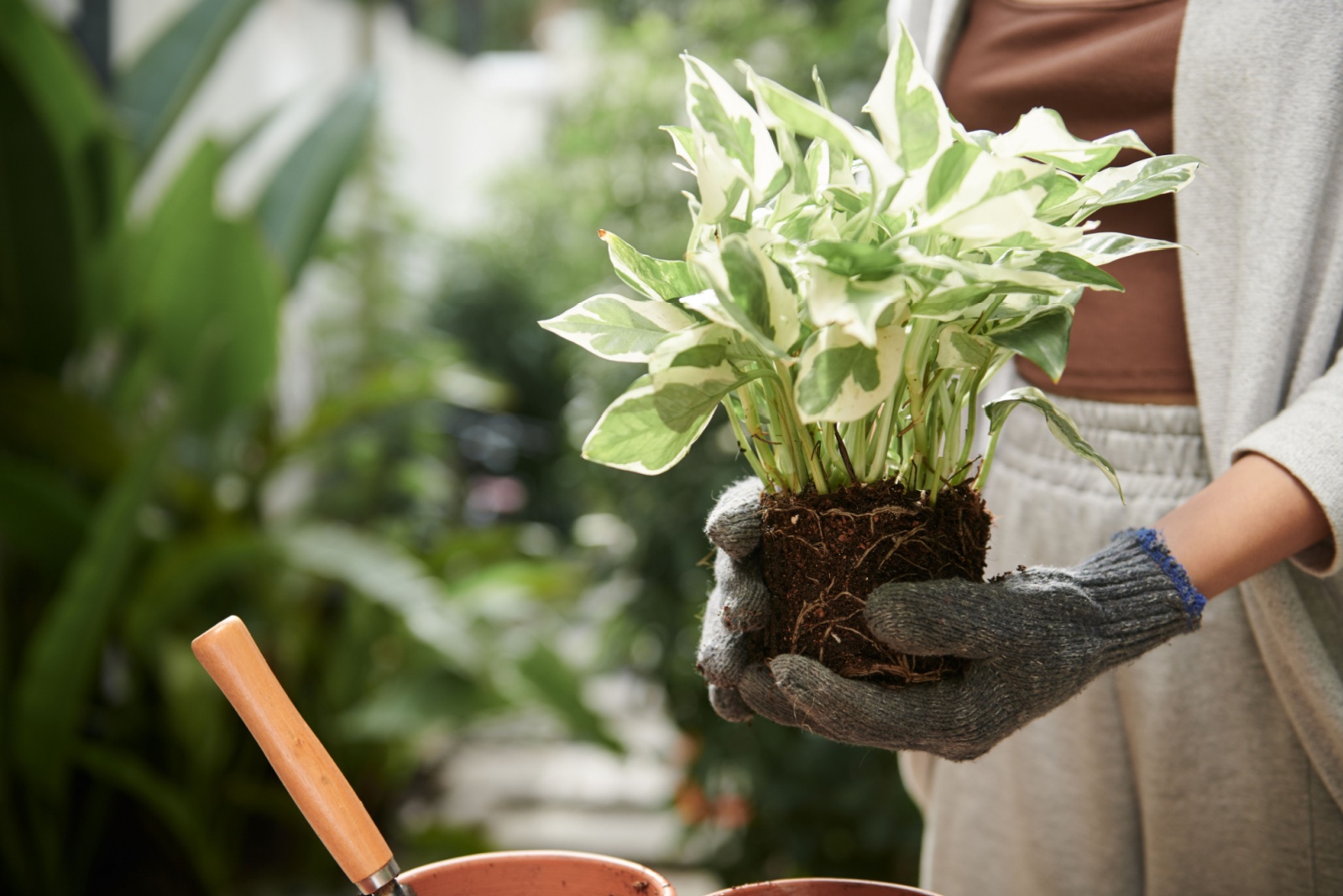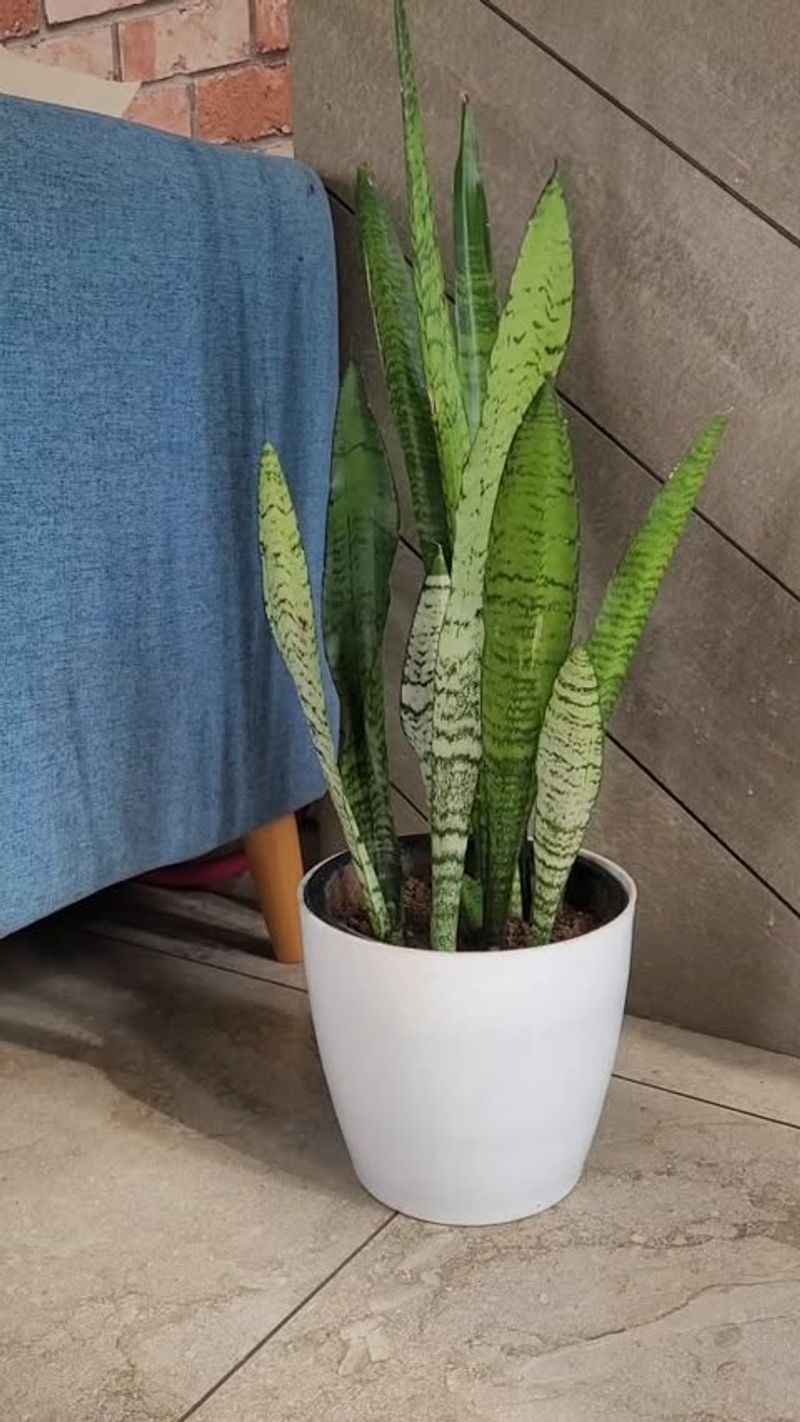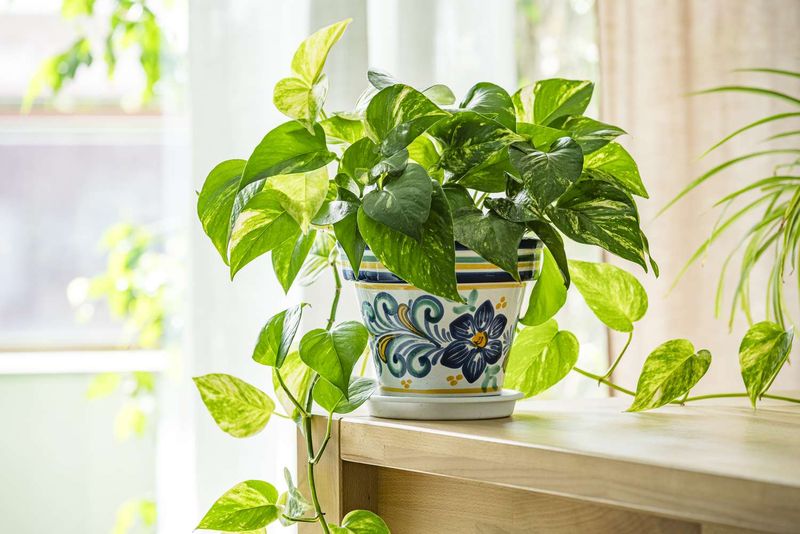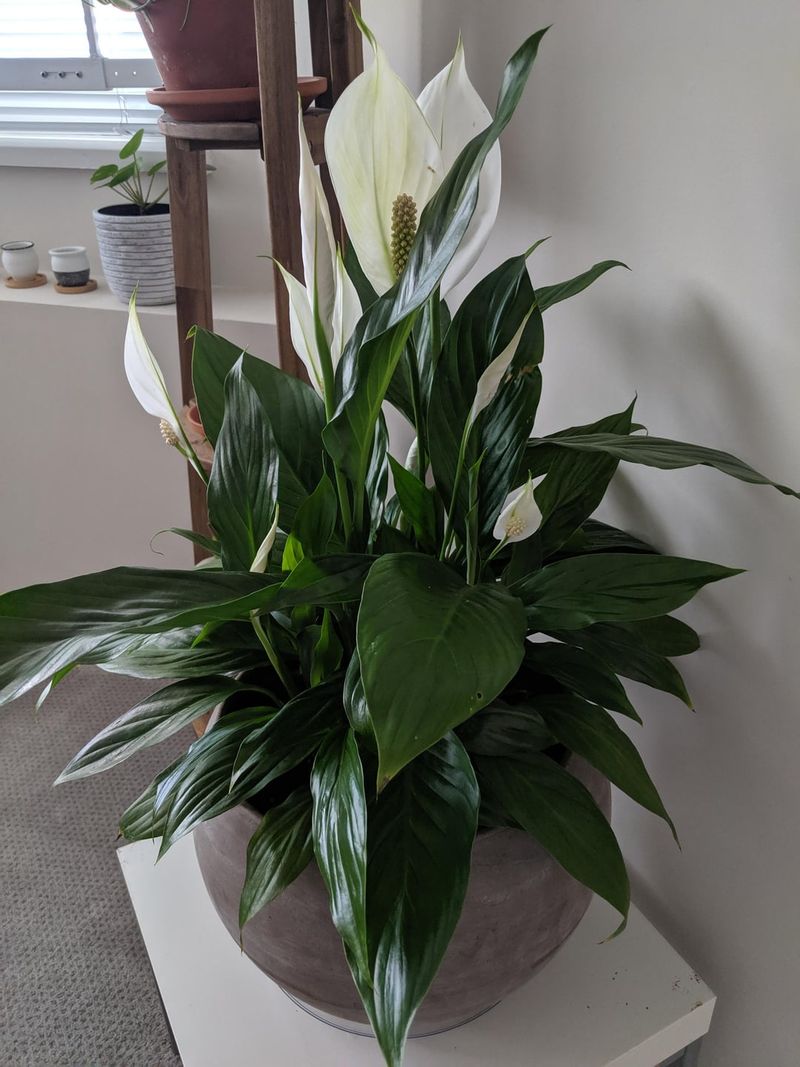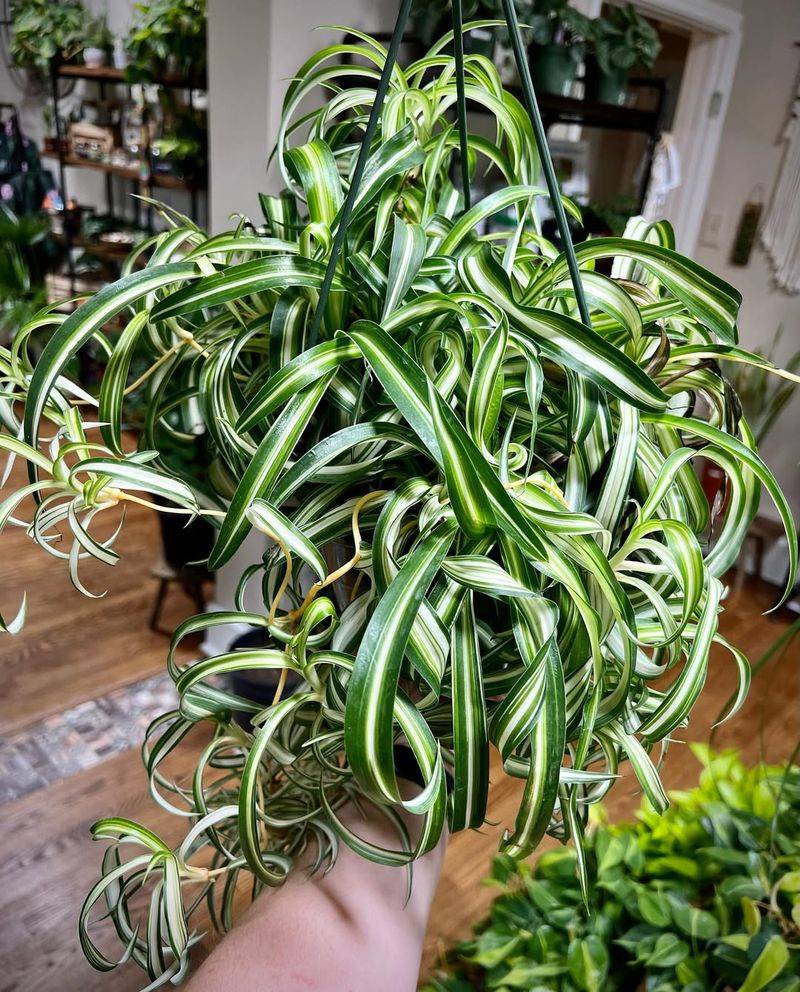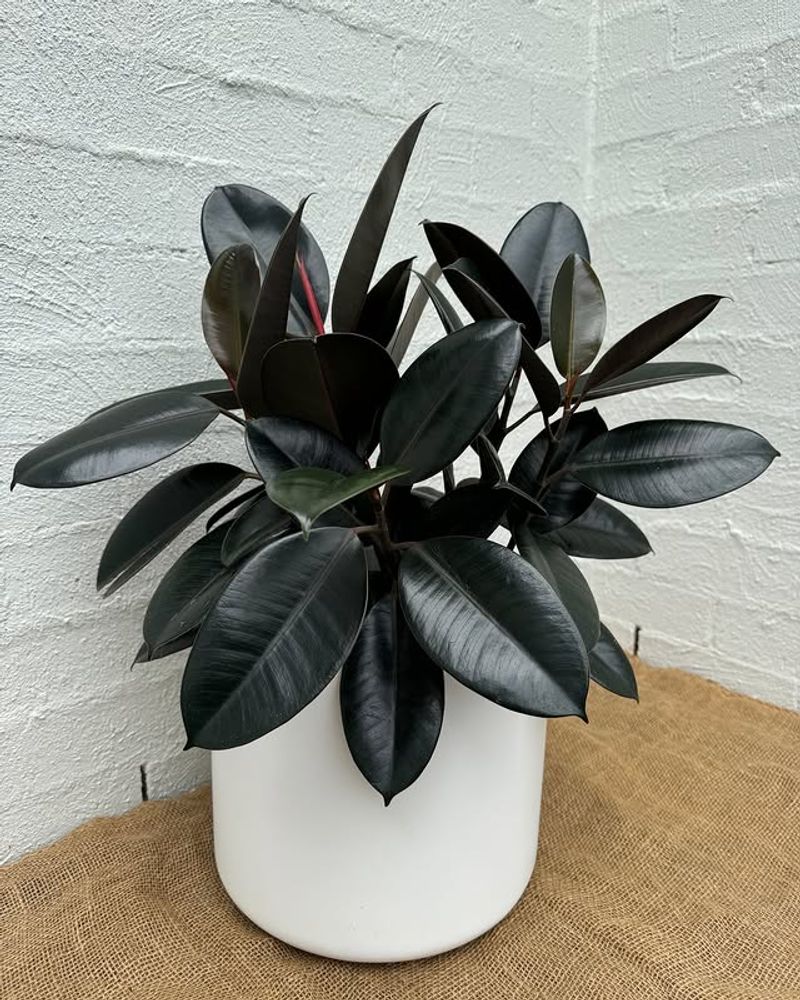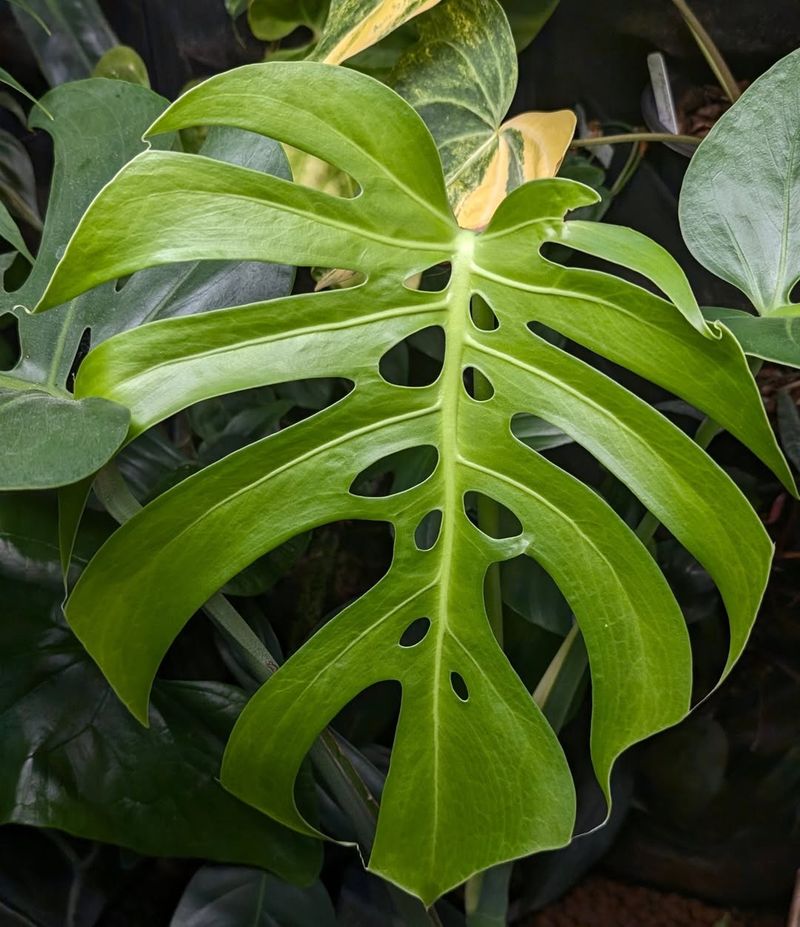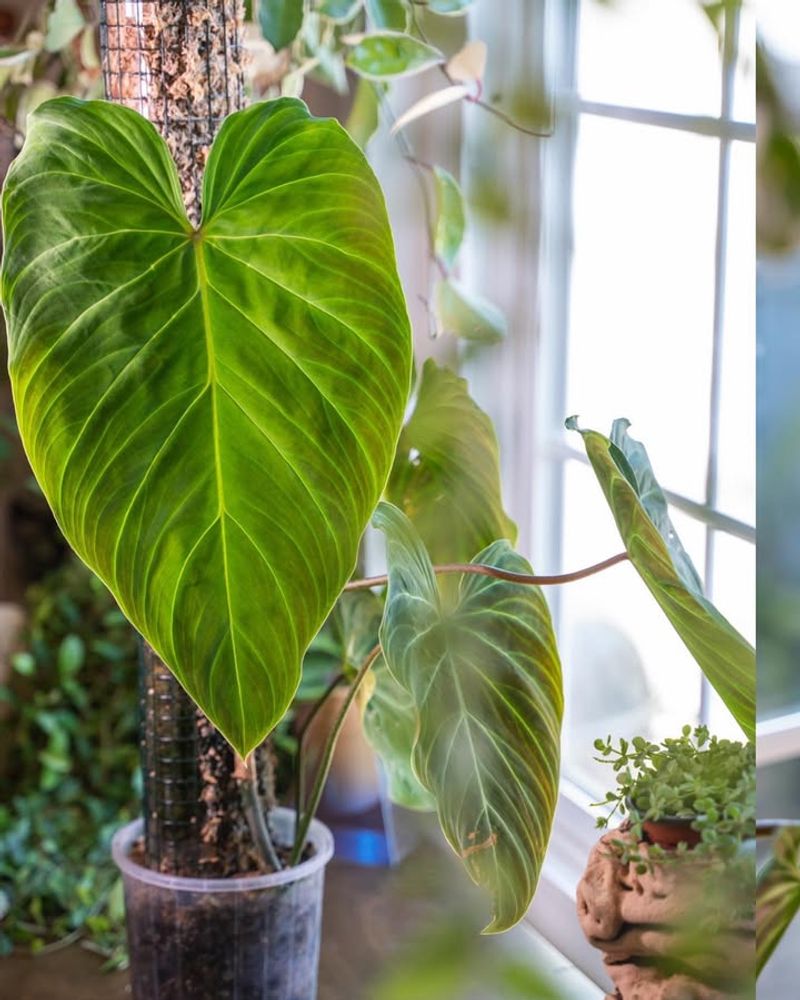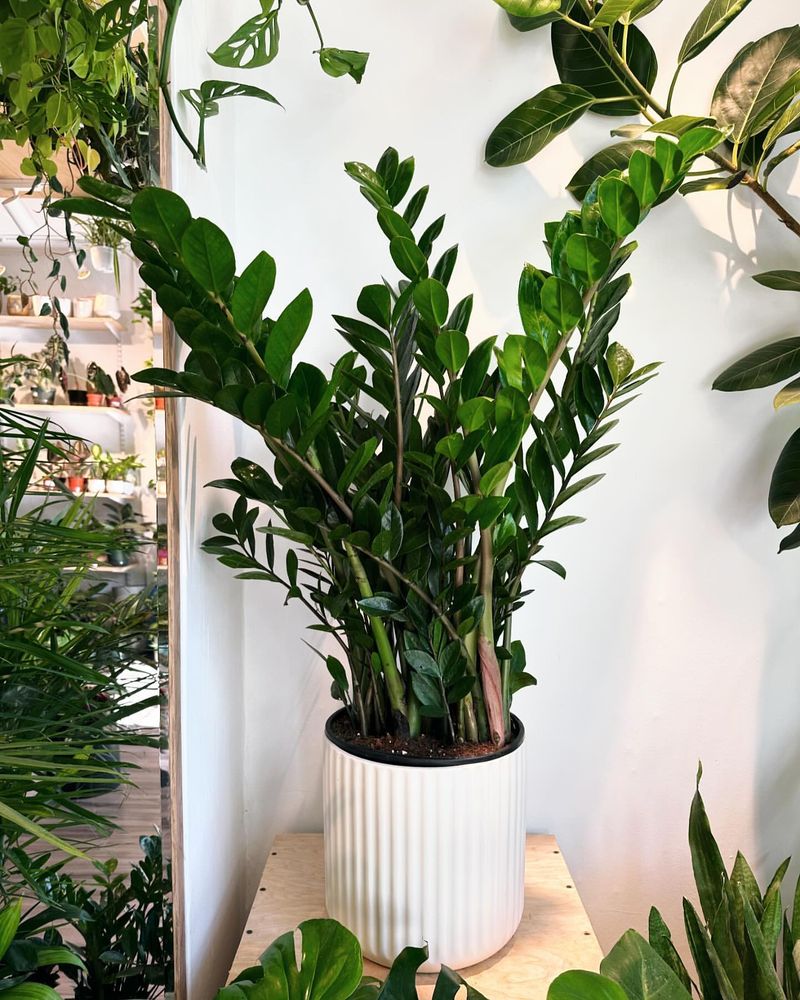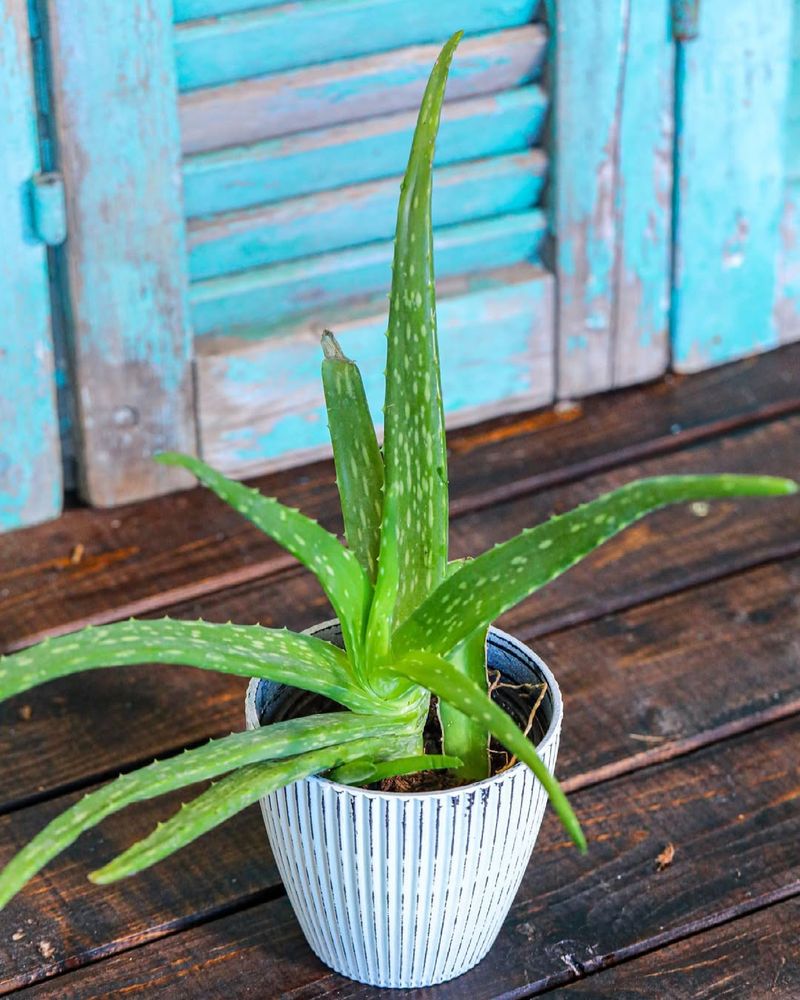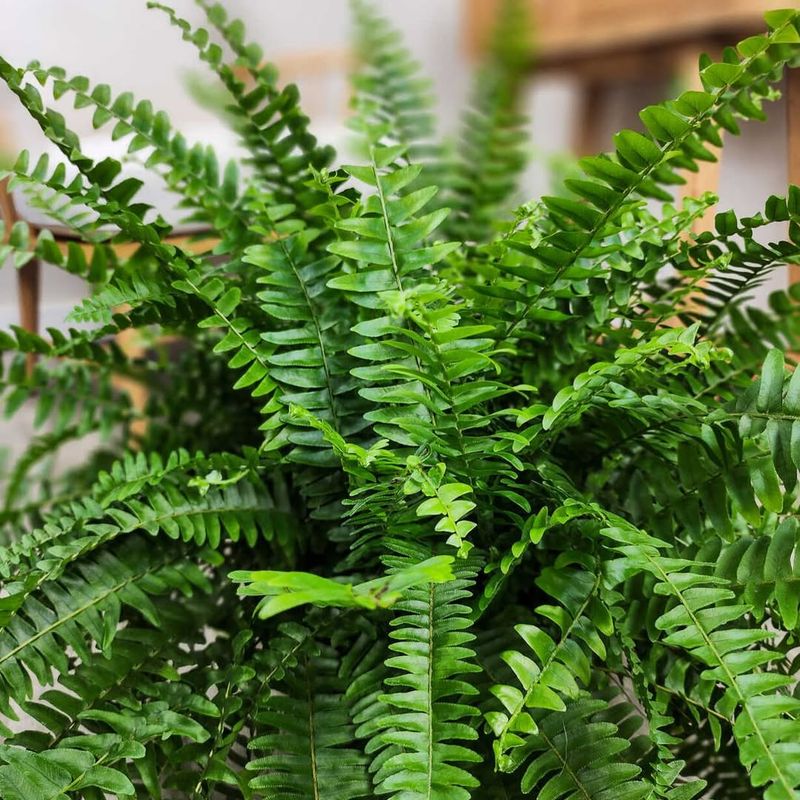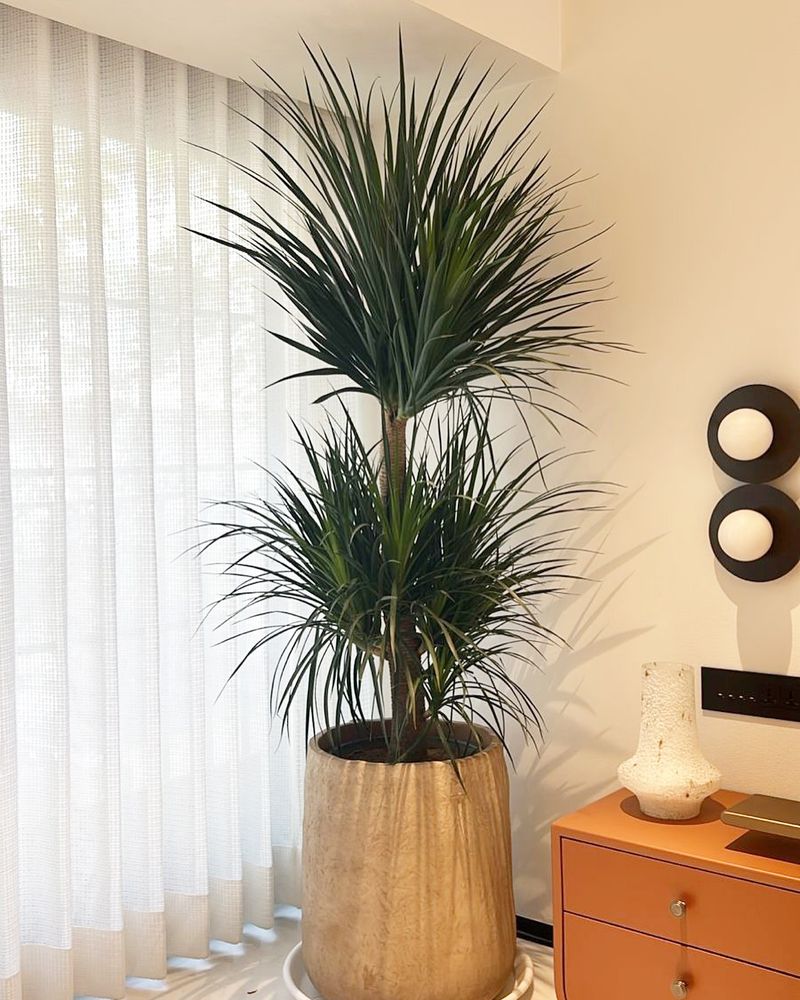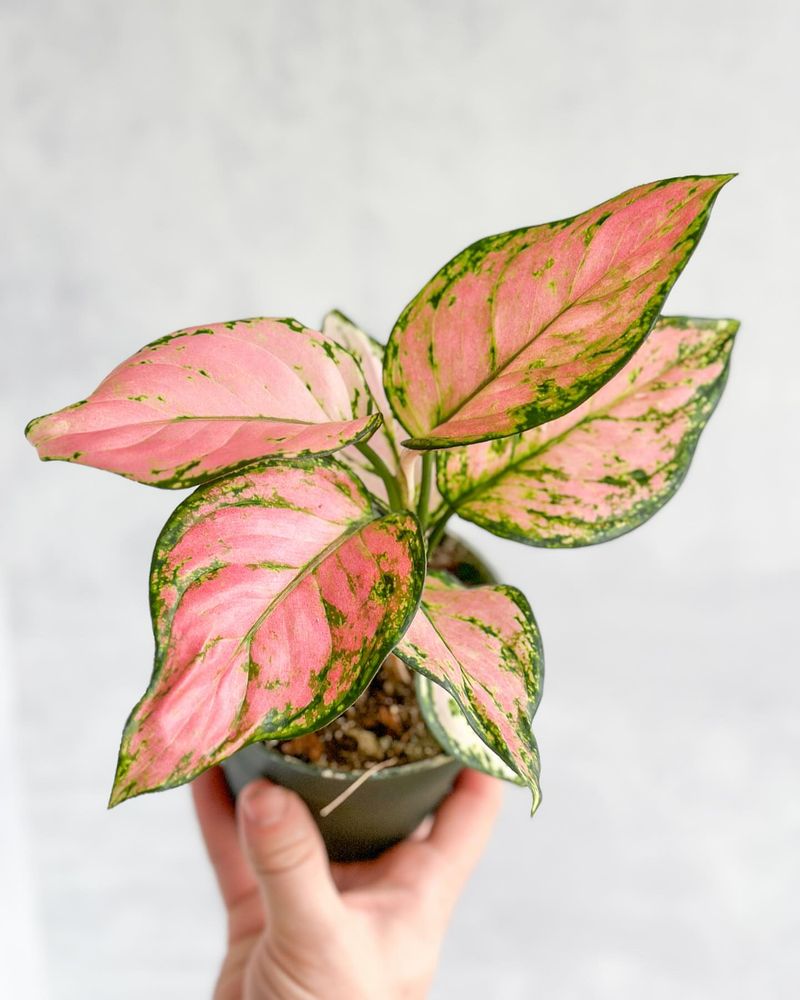November in Tennessee may bring a pause outdoors, but it often highlights which houseplants need a little attention inside.
Not every plant demands a new pot this month, yet several popular varieties start showing clear signs that their roots need more space, fresher soil, or better drainage.
When pots overflow, soil compacts, or growth slows to a crawl, a simple move to a larger container helps prevent future trouble and sets these plants up for healthier growth ahead. With the right moment, they enter winter stronger and greet the next season ready to thrive.
1. Snake Plant (Sansevieria)
Snake plants grow slowly but surely, and November offers the perfect window to give them a roomier container before winter sets in. Their thick rhizomes can crack pots if left too long in cramped quarters.
Look for roots poking through drainage holes or circling the soil surface. Fresh potting mix helps prevent root rot during Tennessee’s humid indoor winter conditions. Use a pot only one size larger to avoid overwatering issues that plague these drought-tolerant beauties.
2. Pothos (Epipremnum aureum)
With vines that seem to grow overnight, pothos plants quickly outgrow their containers and signal they need more space. Root-bound pothos will show yellowing leaves and slowed growth despite regular watering.
November repotting gives these climbers a fresh start before the spring growing season kicks into high gear. Choose a container with excellent drainage and use well-aerated potting soil. Your pothos will reward you with vibrant new growth and healthier foliage throughout the coming year.
3. Peace Lily (Spathiphyllum)
Peace lilies are drama queens that droop dramatically when thirsty, but frequent wilting might mean they need repotting instead of more water. Crowded roots cannot absorb moisture efficiently, leading to constant stress.
Tennessee’s November weather provides mild conditions perfect for this transition. Select a pot two inches wider than the current one and use rich, moisture-retaining soil. Your peace lily will bounce back quickly and produce more of those elegant white blooms you love.
4. Spider Plant (Chlorophytum comosum)
Spider plants produce adorable babies constantly, which means the mother plant exhausts soil nutrients faster than you might expect. Thick, tuberous roots will push through the soil surface when they run out of room.
Repotting in November gives your spider plant time to establish before producing next spring’s crop of spiderettes. Use a hanging basket or wide pot with quality potting mix. Trim away any damaged roots and watch your plant flourish with renewed energy.
5. Rubber Plant (Ficus elastica)
These hardy plants can grow surprisingly tall indoors, and their vigorous root systems need regular upgrades to support all that gorgeous foliage. A root-bound rubber plant will drop leaves and stop producing new growth.
November’s cooler temperatures reduce transplant shock for these tropical beauties. Choose a sturdy pot that can handle the weight as your plant matures. Fresh soil enriched with organic matter keeps leaves shiny and prevents common nutrient deficiencies that plague cramped rubber plants.
6. Monstera Deliciosa
Those stunning split leaves require substantial root systems to support their impressive size and weight. Monsteras outgrow pots quickly, especially when they receive proper care and lighting.
November repotting prevents your monstera from becoming top-heavy and unstable. Add a moss pole or trellis to the new container for climbing support. Use chunky, well-draining soil that mimics their natural rainforest environment. Your monstera will develop even more dramatic leaf fenestrations with adequate root space and nutrition.
7. Jade Plant (Crassula ovata)
These plants store water in their plump leaves, but they still need fresh soil every few years to replenish minerals and prevent compaction. Top-heavy jade plants in small pots tip over easily, risking broken branches.
Tennessee’s November weather provides ideal conditions for repotting these succulents without heat stress. Use cactus soil or add sand to regular potting mix for proper drainage. A shallow, wide pot works better than a deep one for jade plant root structures and prevents moisture issues.
8. Philodendron
Philodendrons are forgiving houseplants, but even they suffer when roots circle endlessly in too-small containers. Stunted growth and smaller leaves indicate your philodendron craves more space.
Repotting this November gives roots room to spread before winter dormancy sets in completely. Use a pot with drainage holes and loose, airy potting soil. Many philodendron varieties appreciate a climbing structure, so consider adding support when you repot. Your plant will thank you with lush, vibrant foliage year-round.
9. ZZ Plant (Zamioculcas zamiifolia)
ZZ plants are nearly indestructible, but their potato-like rhizomes eventually need more space to store water and nutrients. Bulging rhizomes pushing against pot sides signal repotting time has arrived.
November works beautifully for this slow-growing beauty because minimal active growth means less stress. Choose a heavy pot to balance the plant’s weight and prevent tipping. Use well-draining soil and resist overwatering after repotting. Your ZZ plant will continue its reputation as the ultimate low-maintenance houseplant.
10. Aloe Vera
Aloe vera produces pups generously, which crowd the mother plant and compete for nutrients and water. Separating pups during November repotting creates multiple plants and gives everyone breathing room.
Tennessee’s moderate November temperatures prevent heat stress during this process. Use cactus potting mix or add perlite for excellent drainage that prevents root rot. Terra cotta pots work wonderfully because they wick away excess moisture. Your aloe will reward you with plump, healthy leaves perfect for soothing minor burns and skin irritations.
11. Boston Fern (Nephrolepis exaltata)
Ferns are moisture-loving plants with aggressive root systems that quickly fill containers and push through drainage holes. Pot-bound ferns dry out frustratingly fast no matter how often you water.
November repotting helps these humidity lovers establish before winter’s dry indoor air takes its toll. Choose a pot slightly larger with good drainage and use moisture-retaining potting soil. Trim away dead fronds and brown roots before repotting. Your fern will reward you with lush, cascading greenery throughout Tennessee’s winter months.
12. Dracaena
Dracaenas grow steadily upward, developing thick canes that need stable root systems for support and nourishment. Yellowing lower leaves often indicate exhausted soil rather than watering problems.
November offers perfect timing to refresh your dracaena’s growing environment before winter dormancy deepens. Use a pot with adequate weight to prevent tall plants from toppling over. Well-draining potting soil prevents the root rot these plants are prone to developing. Your dracaena will maintain its striking architectural presence with renewed vigor and healthier foliage.
13. Chinese Evergreen (Aglaonema)
This stunning plants are undemanding, but their colorful foliage fades when roots exhaust available nutrients in old, compacted soil. Slow growth and pale new leaves signal repotting needs.
Tennessee’s November climate provides gentle conditions for moving these tropical beauties to larger homes. Select a container only slightly bigger than the current one to avoid moisture issues. Use rich, well-draining potting mix that holds some moisture without becoming soggy. Your Chinese evergreen will display more vibrant leaf patterns and colors with proper root space and fresh nutrients.

